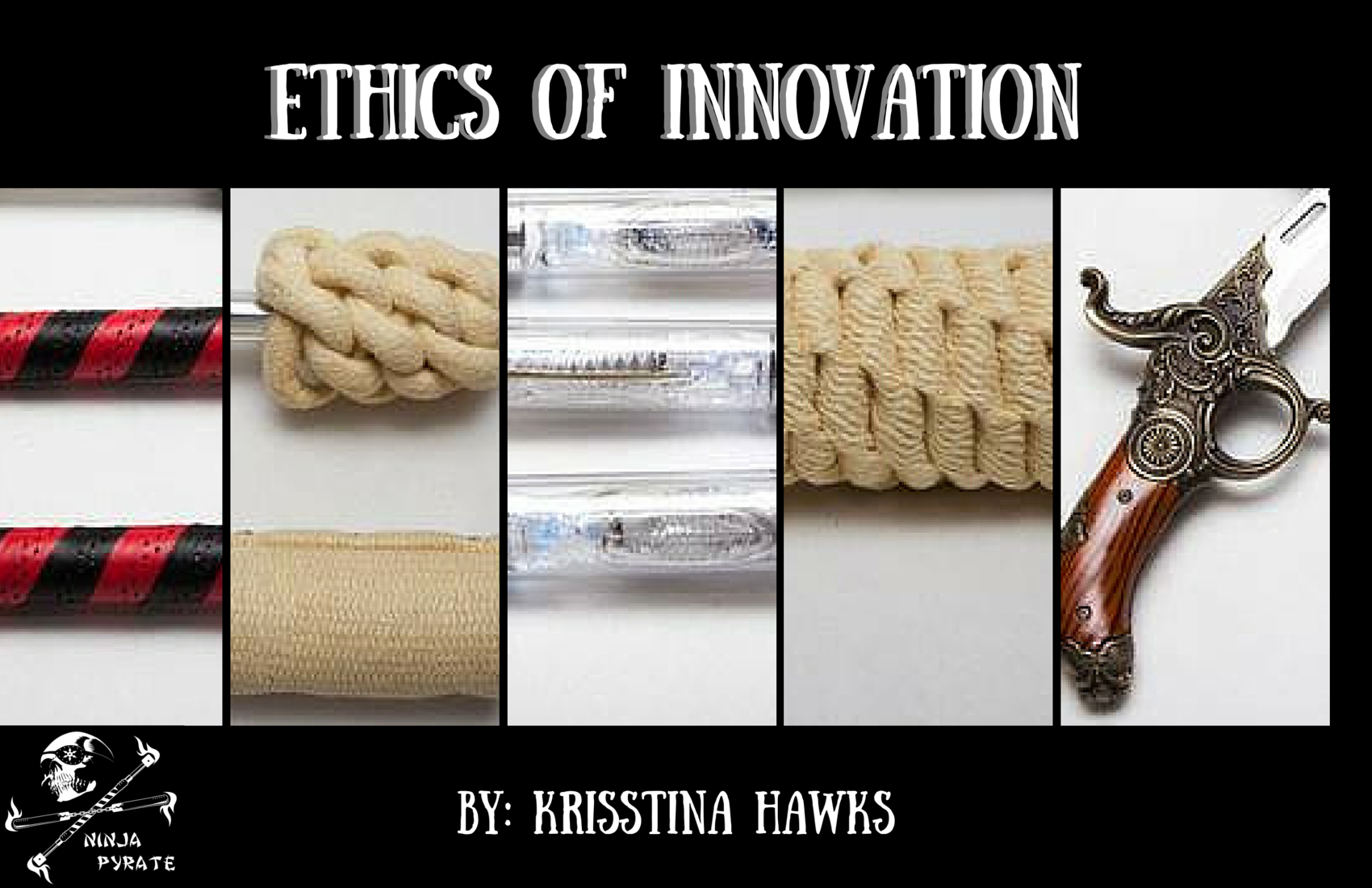Since then, I have seen the quality of props skyrocket in terms of safety, feel, and appearance. As prop scientists, we continue to develop our tastes and preferences. Through teaching classes and imparting our heartfelt thoughts on the matter, we’ve seen industry trends follow suit. In this way, vendors can be considered leaders of the community, and have a large impact on the people and overall culture.
It is precisely because of this interaction that we have evolved so quickly. However, this kind of growth develops the same types of issues that occur in every industry. As one vendor put it, we are all working with similar sets of legos. Being on the same road at the same time, we are going to have idea crossovers. Sometimes this is falsely perceived as being plagiarism. Sometimes it truly is. How can you tell the difference?
First, we will never conclusively know if someone is telling the whole truth. Even hearing both sides of a story leaves you clouded with your initial bias, and there is far more information involved than could possibly be laid out to a third party. Certainly, anyone other than the directly affected parties should not be propagating gossip. Whatever the issue, it isn’t worth splitting factions into our community. No one needs to take sides.
So you are an aspiring prop maker, great! Here’s a checklist.
1. Did you genuinely come up with the idea on your own?
Obviously, we are dealing with sticks, balls, and strings – and things that are not rocket science. Outside of the very basic stuff (like how do you attach a wick to a staff) or things you can find online as tutorials, did you genuinely come up with this idea on your own? If you were inspired by others, is your idea an improvement on their design in some way?
Skiffle and I sat on the floor of home depot playing with conduit and pipe fittings, bought a pipe threader, and realized that design sucked! We then continued to fail better and better. Your process should be similar to this. You cannot make the perfect prop without some trial and error. This costs a great deal of time and money, which leads to my next point. Fail hard and often, but don’t steal or borrow ideas without crediting them.
2. Did you reverse engineer the specs on your design?
Someone has taken the time and effort to go through a process such as that above. In doing so, they have found an optimal length, weight, or style. Are you trying to figure out what they did so that you can offer a version of that product at a lower price? This is a big no-no. This is something we need to combat as a community. There is nothing wrong with asking questions, and information freely given is fair game. Otherwise, make your own discoveries. You have something special to add to the equation if you take the time to find it.
3. Did you still have an idea all on your own, but then saw someone else with a similar idea first?
The good news is, you don’t have to stop your progress! Who knows how your idea will evolve on your timeline? It could lead to wonderful things. If you honestly came to a scientific conclusion, do your damn thing! If you were influenced by someone, perhaps give them credit for their innovation and describe how you developed your idea/why it is different. We should not halt innovation because people found their way first, but it should be honest innovation.
Here we start into the scary grey area. In my opinion, a vendor doesn’t own a material because they used it “first”. First is pretty subjective and it is unwise to claim you were the first to do anything. People you have never heard of have been around for quite awhile, doing lots of things. Also, over a long enough timeline, things that were great innovations become “industry standard”. Where this line is, it’s hard to say. Check your conscience, and be prepared to stand behind your intentions when you make that call. This brings me to the next point on the check list.
4. A customer has brought you a design.
A quick search should be able to tell you if their design is unique, or if it is based on another vendor’s product. If it is someone else’s, the ethical thing to do would be to send the customer to that vendor. You are not always going to know this is the case. If you find out that you have already made something unknowingly, owning up to that as a mistake will generally solve the issue. I would certainly respect you for it.
5. Processes are Research and Development
Lastly, in a place where learning and teaching is so prevalent, it is easy to feel entitled to the processes vendors use to create their products. We get pressured for information fairly regularly. There are many things I am willing to teach and share, but processes that took the last four years to learn (which allow us to do this full-time) are not necessarily among them. Trial and error is how you can be sure to meet the rest of the criteria on this check list. It is important to discover your own systems so that they will be unique. Feel free to ask questions, but don’t expect all the answers.
I believe that this community is growing exponentially. We have to work hard to make sure the newcomers live up to our moral code by informing them of what it means. As vendors, we need to keep ideas progressing without finger pointing and arguing amongst ourselves. We have to hold ourselves accountable to one another, but in a dignified manner. Sometimes, we are going to have to agree to disagree and find ways to coexist for the sake of our community. As I stated earlier, we have an impact on the industry as a whole and the emotional climate within it. We want to stand together. If we divide, our community will divide with us. We need to be good examples of how to treat one another with respect. I don’t always agree with everyone, but I do respect you all for your hard work. I consider all of you my friends, and I downright love most of you like family. I want to continue to be different than other industries. Let’s try to put our friendships in front of our business concerns. I am looking forward to seeing you all at “Fire Thing 2016”.
* I was approached to write this article. It is entirely based upon my personal opinion, and while some may agree, it does not represent the feelings of the community as a whole. It is intended to start productive discussions and be informational, not to fuel arguments.*

